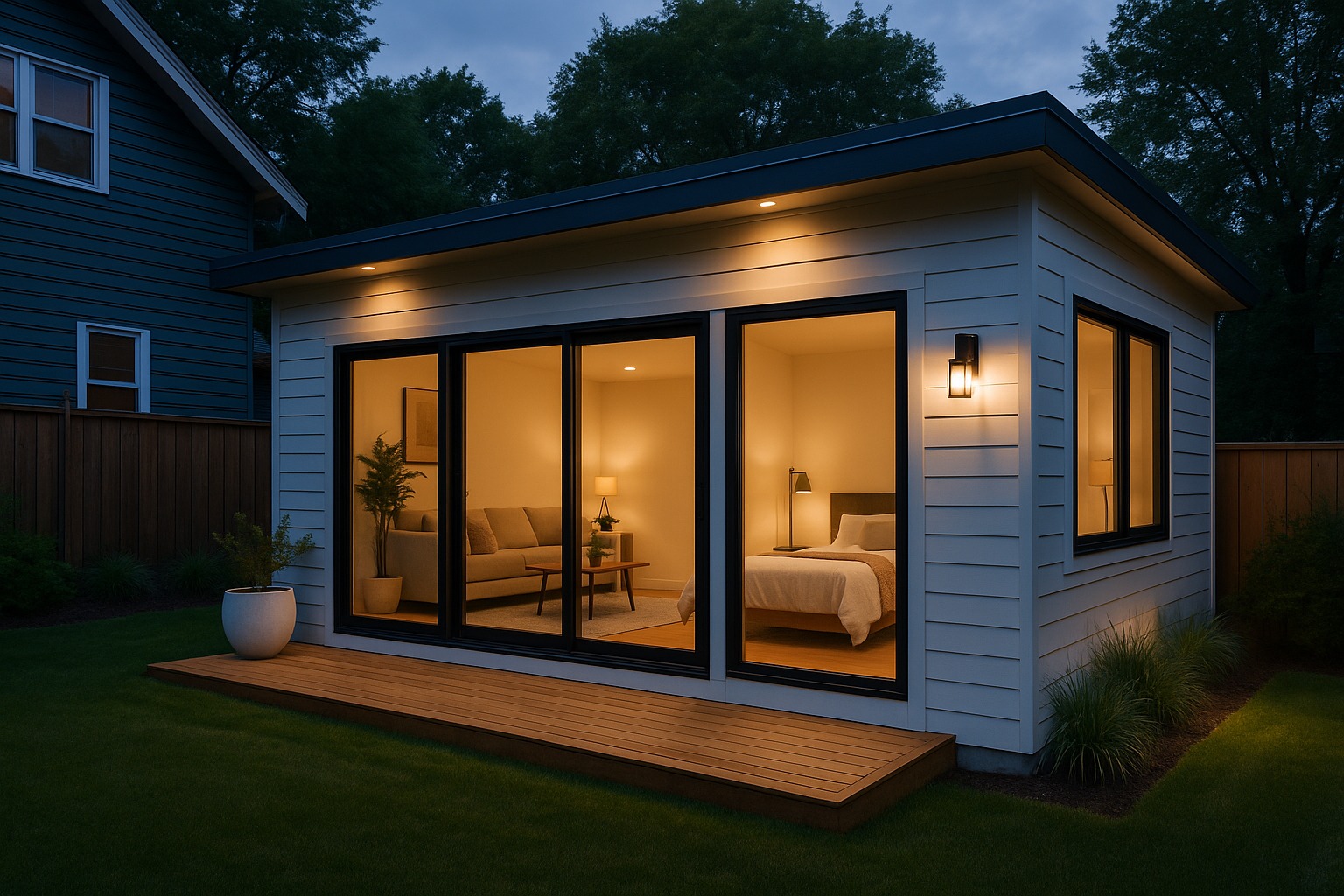Washington ADU Regulations — 2025 Statewide Guide
What Washington’s 2023–2025 laws mean for your backyard home: two ADUs per lot, at least 1,000 sf allowed, simpler parking, and no owner-occupancy rules.
- Costs
- Regulations
- Builders
- Financing
State & city quick nav

The statewide rules at a glance
Core statewide requirements
Two ADUs per residential lot in GMA urban growth areas (attached, detached, or combo). Source
At least 1,000 sf must be allowed; locals may allow more. Source
Not required for principal or ADU (exception may apply for STRs). Source
No on-site parking may be required within ½ mile of a major transit stop; elsewhere, the cap is 1 space/unit on lots < 6,000 sf and 2 spaces/unit on lots > 6,000 sf. RCW 36.70A.681
Capped at ≤ 50% of the principal unit’s fees. RCW 36.70A.681
Height may not be limited below 24 ft or below the principal’s height limit; setbacks/yard coverage/design may not be more restrictive than for the principal unit. RCW 36.70A.681
Legal basis: HB 1337 (RCW 36.70A.680–.681, .696–.699). See Washington Dept. of Commerce’s ADU page for agency guidance and homeowner resources. Commerce • Bill summary
Note: Public street improvements may not be required as a condition of permitting an ADU. RCW 36.70A.681
Quick visuals
State law sets floors: ADU height may not be limited below 24 ft or below the principal’s height limit, and setbacks/yard coverage/design standards cannot be more restrictive than for the principal home (local numbers vary). See RCW 36.70A.681.
How to permit an ADU (statewide flow)
- Confirm eligibility. You’re inside a GMA urban growth area, and your lot supports a principal dwelling (existing or proposed).
- Pick your ADU path. Attached ADU, detached ADU (DADU), or convert existing structure (e.g., garage or outbuilding).
- Run the code checklist. Plan for ≥1,000 sf; apply the parity rules for height/setbacks/design; check parking rules based on transit proximity and lot size per RCW 36.70A.681.
- Prepare submittals. Site plan, floor plans, elevations, energy/MEP forms; many cities publish ADU checklists. Commerce ADU permit checklist
- Apply online & pay fees. Impact fees are ≤50% of a new house. Use your local permit portal (directory: city & county websites).
- Build & inspect. Typical inspections include foundation, framing, rough-in MEP, insulation/energy, and final; your local building department will confirm the sequence.
Shortcuts: Many cities offer pre-approved DADU plans (e.g., Seattle ADUniverse, Renton, Kirkland). Availability varies.
What this changes in practice
- Two ADUs now standard in urban growth areas → more flexibility for multigenerational use and rental income.
- Parity standards (height/setbacks/design) remove many ADU-only constraints that used to slow projects.
- Lower carrying costs via impact-fee cap (≤50% of main home).
- Parking cannot be required within ½ mile of major transit; otherwise the cap is 1 space per unit on lots <6,000 sf and 2 spaces per unit on lots >6,000 sf.
Always cross-check your city/county’s implementation timeline; state law preempts after periodic update windows. Commerce guidance
Mini case notes (realistic scenarios)
Washington ADU FAQ (statewide)
Can my city still require owner-occupancy?
No. State law prohibits owner-occupancy requirements for ADUs or the principal unit. An exception may apply where the property is used for short-term rentals. See Commerce.
Is 1,000 sf the maximum size?
No—1,000 sf is the minimum that must be allowed. Many jurisdictions allow more (e.g., up to 1,200 sf). Check your local code. MRSC overview.
Do I need to add parking?
Not within ½ mile of a major transit stop. Otherwise, the statewide cap is 1 off-street space per unit on lots under 6,000 sf and 2 spaces per unit on lots over 6,000 sf. See RCW 36.70A.681.
What are the setbacks and height limits?
ADU height may not be limited below 24 ft or below the principal dwelling’s height limit, whichever is smaller; and setbacks/yard coverage/design standards cannot be more restrictive than for the principal home. Local numbers vary by city/county. See RCW 36.70A.681.
Can I sell my ADU separately?
Yes. State law allows separate sale (e.g., condo or unit-lot subdivision) where local processes exist; it cannot be prohibited solely because the unit began as an ADU. See RCW 36.70A.681.
Where do I start with permits?
Use your city/county permit portal. Many publish ADU checklists and pre-approved plan sets. Directory: city & county websites. State checklist: ADU building permit checklist.
Next steps
Ready to move? Get matched with vetted builders and a rough budget in minutes.
Official sources & further reading
- Washington Dept. of Commerce — Accessory Dwelling Units (updated 2025)
- RCW — 36.70A.681 (Limitations on local regulation)
- MRSC — Accessory Dwelling Units (ADUs) (statewide overview)
- Legislature — HB 1337 bill summary